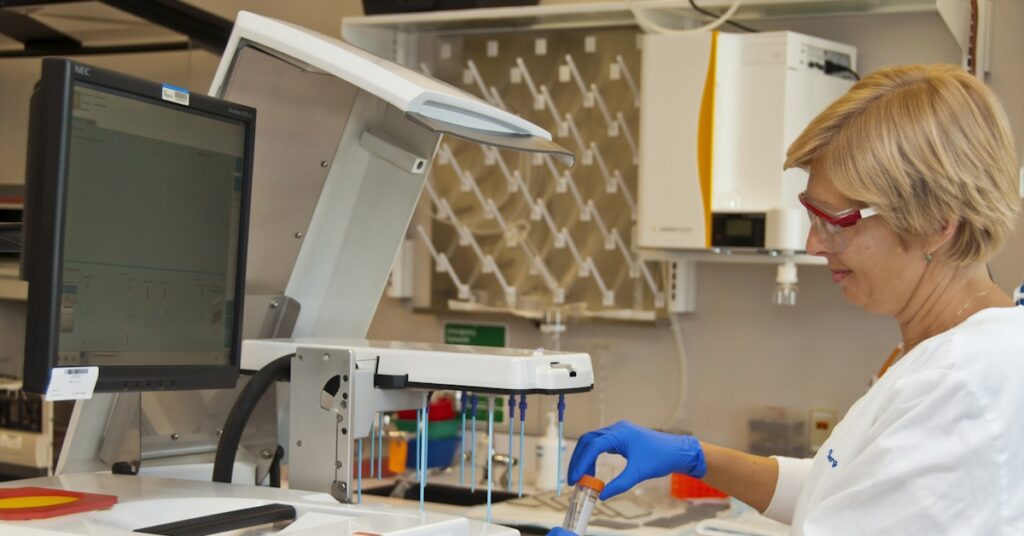Are design revisions killing your timelines?
Juggling different systems for schematics, compliance, and your ERP creates a disjointed workflow. It’s a recipe for mistakes and delays.
These manual errors and constant back-and-forth eat into your project budget and push deadlines. It feels like you’re always playing catch-up.
This isn’t just a feeling; it’s a costly reality. Data Horizzon Research found that 28% of electrical projects experience cost overruns due to design inaccuracies. These are preventable issues.
The right software can fix this by unifying your design environment. It helps you cut down on manual errors and streamline your entire process.
In this guide, I’ll review the best electrical design software. I will focus on tools that integrate with your PLM/ERP systems to accelerate project delivery.
You’ll discover how to standardize your workflows, reduce revision time, and ensure your team meets compliance standards without the extra work.
Let’s get started.
Quick Summary:
| # | Software | Rating | Best For |
|---|---|---|---|
| 1 | ETAP → | Engineers at all sizes | |
| 2 | Zuken → | Complex industrial projects | |
| 3 | Siemens → | Mid-sized engineering firms | |
| 4 | Trimble → | Construction-focused firms | |
| 5 | PTC → | Product complexity managers |
1. ETAP

Struggling to unify your electrical design systems?
ETAP provides modular software for electrical system design, engineering, and manufacturing, helping you manage complex projects. This means you can create precise electrical schematics, panel layouts, and wire harness systems with integrated regional standards for streamlined calculations and deliverables. It reduces manual errors and accelerates revisions.
This is how ETAP helps.
ETAP offers a unified electrical digital twin platform, providing solutions for the entire electrical system lifecycle from design and engineering to operations and maintenance. It offers intuitive and modular software for your electrical network design with integrated regional standards, streamlining calculations and project deliverables. This ensures compliance with standards and efficient data exchange. Additionally, its Power Simulator subscription allows companies of all sizes to design, analyze, and optimize electrical systems. Plus, the platform supports automated protection and coordination, arc flash safety, and advanced distribution management, facilitating digital transformation for your team.
You can truly unify your systems.
While we’re discussing reducing manual errors, my guide on best clinical decision support system might also be helpful for those in healthcare.
Key features:
- Integrated Digital Twin: Unifies electrical system design, analysis, operations, and automation for a holistic view and enhanced collaboration.
- Comprehensive Design & Analysis: Offers tools for low voltage electrical design, system modeling, arc flash safety, and distribution network analysis.
- Project & Data Management: Facilitates collaborative project management with cloud and mobile capabilities for efficient data collection and exchange.
ETAP features, pricing, & alternatives →
Verdict: ETAP stands out as the best electrical design software, unifying your systems and cutting design time. Its modular solutions and integrated digital twin platform make it ideal for engineers seeking precise schematics, seamless PLM/ERP integration, and efficient handling of complex wiring diagrams, ensuring compliance and operational excellence.
2. Zuken

Struggling with complex electrical system design challenges?
Zuken’s E3.series provides a true concurrent electrical engineering environment, addressing the demand for seamless design flows.
This means you can effectively handle advanced requirements for electrical documentation, cabinet, and wire harness design, streamlining your manufacturing outputs. The result? Master complexity, empower collaboration, and maintain agility.
So, how does Zuken help?
Zuken offers integrated solutions spanning Model-Based Systems Engineering (MBSE), PCB, and electrical design, accelerating collaboration and delivery. Their solutions support the complete development lifecycle for electrical systems, from architecture to physical design.
This means you get robust electrical, fluid, and wiring design software, plus unified multi-site library and design data management via DS-E3. You can ensure high-quality products and streamlined engineering processes. Additionally, their CR-8000 platform tackles complex multi-board PCB design, with DS-CR offering integrated data management for PCBs, further enhancing overall data integrity and cross-disciplinary collaboration.
Unify your systems and cut design time.
If you’re evaluating various organizational systems, you might find my detailed analysis of best college management systems helpful for automating tasks and cutting costs.
Key features:
- E3.series platform: Provides a concurrent electrical engineering environment for electrical documentation, cabinet, and wire harness design, streamlining manufacturing outputs.
- DS-E3/DS-CR data management: Offers unified multi-site library, design data, and configuration management for both electrical and PCB designs, ensuring seamless integration.
- Integrated solutions: Connects MBSE, PCB, and electrical design processes, enabling efficient cross-disciplinary collaboration and accelerating product development and delivery.
Zuken features, pricing, & alternatives →
Verdict: Zuken provides robust tools for complex industrial projects, making it a strong contender for the best electrical design software. With its focus on unified data management and integrated design environments, Zuken helps you achieve precise schematics and efficient handling of complex wiring diagrams.
3. Siemens

Struggling with complex electrical design and integration?
Siemens addresses these pain points directly, helping you achieve digital transformation. This means your team can finally unify systems.
You can overcome the struggle of fragmented systems, leading to safer, more efficient, and cost-effective operations.
Here’s how Siemens helps.
Siemens offers solutions, like Digital Twins, that are part of the solution to achieve your digital transformation goals. This means your engineering team can streamline workflows.
It specifically helps make CNC machining safe, efficient, and cost-effective, which directly translates to reduced manual errors and faster revision adjustments for you. This comprehensive approach means your electrical designs become more precise, simplifying complex wiring diagrams. Additionally, it improves collaboration across multidisciplinary teams through standardized design environments.
The result is a unified system.
Before diving deeper, you might find my analysis of best electrical contractor software helpful for managing your projects.
Key features:
- Digital Twins for Efficiency: Siemens provides Digital Twins to make CNC machining safe, efficient, and cost-effective, helping your team achieve digital transformation goals.
- System Unification: Siemens solutions are designed to unify your systems, addressing the common challenge of fragmented processes in electrical design.
- Cost-Effective Operations: By enabling safer and more efficient processes, Siemens helps you cut design time and reduce overall operational costs.
Siemens features, pricing, & alternatives →
Verdict: Siemens is a strong contender for the best electrical design software, particularly for mid-sized industrial engineering firms. Its focus on digital transformation through Digital Twins ensures more precise schematic creation and efficient handling of complex wiring diagrams, addressing your team’s core pain points and challenges.
4. Trimble

Struggling with disconnected electrical design workflows?
Trimble empowers you to unify your systems, driving productivity and progress through connected hardware and software solutions. This means you can confidently close the gap between design and execution.
Their focus on accelerating work across essential industries ensures that your projects keep moving, turning ideas into innovation for construction projects. This is key for managing complex electrical schematics and variant configurations.
How do you maintain control with constant changes?
Trimble introduces connected solutions that give you a better way to work. You are in command of real-time decisions and adjustments, ensuring work flows smoothly from end to end. This means you can handle everything from precise schematic creation to complex wiring diagrams with ease.
Their approach leverages relentless innovation in 3D modeling and data analytics, helping your electrical designs stay ahead. You’ll find that their technology enables your team to connect people, data, and workflows, achieving remarkable success by minimizing manual errors and streamlining revisions. With Trimble, you can manage over $500 billion in new construction project value annually through their ERPs, giving you powerful tools for mass project data editing and automated bill of materials updates, vital for integrating with existing PLM/ERP systems.
The result is confidence at every turn.
While evaluating your software landscape, understanding the importance of API security testing tools is crucial for robust system integrity.
Key features:
- Connected hardware and software solutions: Unifies your entire design process, ensuring seamless data flow and reduced design time for electrical projects from start to finish.
- 3D modeling and data analytics: Provides precise positioning and advanced insights, allowing you to create accurate electrical schematics and manage complex wiring diagrams effectively.
- ERP integration for project management: Manages vast construction project value and enables automated bill of materials updates, directly addressing your needs for seamless PLM/ERP integration.
Trimble features, pricing, & alternatives →
Verdict: Trimble stands out as the best electrical design software for firms seeking to unify systems and cut design time, especially if you’re grappling with compliance or ERP/PLM integration challenges. Its strengths in connected solutions, 3D modeling, and extensive ERP integration, evidenced by managing over $500 billion in annual construction value, directly address pain points around workflow automation and data consistency.
5. PTC

Struggling with complex electrical designs and system unification?
PTC offers digital solutions to transform how your products are designed, made, and maintained. This means you can accelerate product development with strong collaboration tools.
This helps you manage product complexity, reduce costs, and improve product quality across your entire value chain.
So, how can you deliver more value through your products?
PTC reduces product development friction and complexity, creating benefits like improved quality and accelerated innovation. This helps you overcome product complexity with solutions for managing configurations and product variants.
You can exceed quality expectations with an enterprise-wide approach to quality management, where everyone plays a role in driving continuous quality improvements. Additionally, PTC’s digital foundation supports collaborative product development and concurrent work across the entire product lifecycle, boosting your revenue and growth. The result is a streamlined process for electrical design projects.
Before diving deeper, you might find my analysis of best form automation software helpful for streamlining your business operations.
Key features:
- Accelerate product development with collaborative tools for hardware and software, helping you manage product complexity, reduce costs, and improve quality.
- Manage product complexity by handling configurations, product variants, software/hardware requirements, and technical documentation with ease.
- Enhance manufacturing efficiency by improving supply chain and design collaboration, enabling real-time production performance monitoring.
PTC features, pricing, & alternatives →
Verdict: PTC stands out as a leading contender for the best electrical design software, helping you overcome product complexity, reduce costs, and accelerate innovation. With solutions for managing product variants and improving collaboration, you can ensure high-quality, compliant electrical designs that integrate seamlessly with your existing systems.
6. SmartDraw

Struggling with complex electrical diagrams and outdated tools?
SmartDraw offers sophisticated diagramming features with powerful integrations, streamlining your electrical design workflow.
This means you can easily create precise schematics and complex wiring diagrams while cutting down on manual errors and revision time.
Here’s a better way forward.
SmartDraw simplifies your process by allowing you to generate diagrams automatically, even visualizing AWS and Azure infrastructure directly from your data. You can collaborate in real time with your team through whiteboarding and intuitive tools and templates.
Files save directly to your OneDrive, SharePoint, or Google Drive, ensuring you control your data and simplify compliance, which means you minimize risk and enhance security for all your project information. Additionally, SmartDraw integrates smoothly with your existing Microsoft or Google enterprise stack, making user provisioning and permission setting straightforward. Plus, it supports various technical diagramming needs, like UML and data flow diagrams.
The result? Streamlined, secure, and collaborative design.
Speaking of specialized software solutions, my guide on online course creation software explores tools for education and training.
Key features:
- Sophisticated Diagramming: Build precise electrical diagrams and complex wiring with intuitive tools, templates, and automatic diagram generation from data.
- Secure Data Control: Save files directly to your cloud storage (OneDrive, SharePoint, Google Drive) using established permissions, ensuring full data control and compliance.
- Seamless Integrations & Collaboration: Works hand-in-glove with Microsoft and Google enterprise stacks, offering real-time whiteboarding and team collaboration.
SmartDraw features, pricing, & alternatives →
Verdict: For electrical engineering firms struggling with integration challenges or data control, SmartDraw stands out as the best electrical design software. Its ability to automatically generate diagrams from data, integrate with existing IT infrastructure, and offer robust data security makes it a powerful choice.
Conclusion
Tired of disjointed design workflows?
I know the struggle. Juggling multiple tools for schematics, compliance, and PLM integration creates frustrating delays and costly manual errors for your engineering firm.
It’s a huge, solvable issue. Capterra found users report 45% fewer errors and faster completion with the right software. That’s a massive reduction in rework, freeing up your engineers for more critical design tasks.
So what’s my top recommendation?
From my research, Autodesk offers the most comprehensive solution. It directly addresses the critical need to unify systems and accelerate project delivery.
Its powerful toolset excels at integrating with your existing PLM/ERP systems, making it the best electrical design software for cutting down revision time and ensuring compliance.
For a deeper dive into specific components, my analysis of best PCB design software offers valuable insights.
I recommend you explore a free trial of Autodesk to see how it fits into your team’s specific workflow.
You will finally unify your systems.






